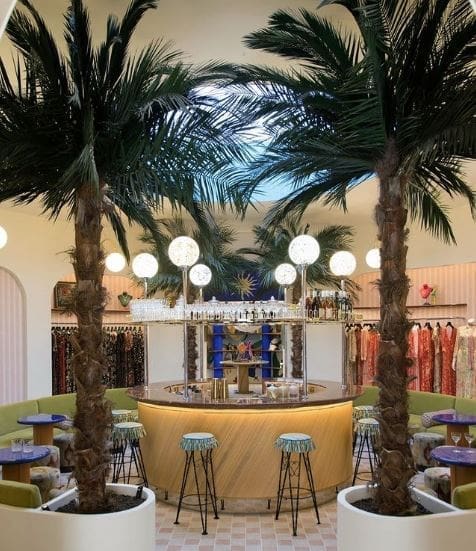Fashion retailing outlook
The fashion sector has benefited from revenge spending following the COVID lockdowns as consumers updated their wardrobes for socialising and large events such as weddings. However, the cost-of-living crisis has led to a shift towards more conscientious shopping behaviours, with women in particular cautious about spending as inflation remains high and their incomes are being squeezed.
Here, we identify 3 key trends for fashion retailing brands to tap into, so they can more successfully adapt to changing consumer preferences:
1. Make shopping in-store more fun
The massive pivot towards shopping online will be a legacy trend of covid meaning that retailers will have to work even harder to encourage consumers to visit stores to buy fashion. While there has been a return to the high street in the last year, in-store shopping for fashion has not matched pre-pandemic levels. Given that most shoppers find shopping for fashion online more convenient than buying in-store, retailers need to focus on turning their stores into more exciting places to draw in customers. We are seeing winning retailers investing in elevating the experience to increase dwell time by adding in additional services such as food and drink and other retail categories. For example, Uniqlo’s new Covent Garden site features a Japanese tearoom, florist and an area where you can design your own T-shirt.
The role of the store is changing and research for Mintel’s Womenswear – UK – 2023 report highlights demand for fashion stores that support their local community, offer styling services, exclusive product launches and store events. In a more competitive retail environment, retailers are having to do more to differentiate themselves and creating unique stores that adapt to a specific location is one way to do this. H&M has launched a hyper-local and curated store concept in Williamsburg, Brooklyn in the US that features products from local businesses and makers, as well as events.
Rixo’s newly opened Chelsea store in London has been designed with the experience in mind and putting a cocktail bar and coffee shop as a central part of the site helps to draw in local footfall and provide an additional reason to visit. The womenswear brand’s flagship store has successfully tapped into the feel good factor associated with shopping for fashion, with close to seven in ten women agreeing that buying new clothes is a way to boost your mood. Brands need to recognise the importance of giving people a lift during a cost-of-living crisis.

2. Use technology to take the friction out of in-store shopping
The way people buy fashion has shifted and young Gen Z and Millennial shoppers tend to combine in-store and online shopping, with their smartphones being used to complement the store experience. Retailers are using the latest technology to help them move towards a unified retail experience, that allows customers to seamlessly move between the physical and digital. Key to reigniting the appeal of fashion stores is removing some of the barriers to shopping in-store, such as queues for changing rooms and to pay for or collect items. We are seeing more retailers investing in digital stores. Zara’s latest store at London’s Battersea Power Station allows customers to use the store mode on its app to pre-book a fitting room, as well as to purchase and collect online orders within two hours and try these items on in-store, sending them immediately back if they choose not to keep them. It also has large RFID-enabled self-checkout areas that help make the purchasing process faster. By taking the friction out of in-store shopping, these technologies also help foster brand loyalty.
3. Make fashion retail more sustainable
Sustainable options stand out as the main factor that would encourage women to shop in-store at one retailer over another, making this a key area for brands to focus on. Women have been the driving force in the booming resale market and are significantly more likely than men to have bought second-hand fashion. At the same time as benefiting the environment, these changes also help consumers spend less as 78% of consumers agree that buying second-hand fashion items is a good way to save money, rising to 85% of women. We are seeing more retailers selling pre-loved fashion in their stores, with Zara adding a second-hand and resale section to some of its stores in the UK from November 2022.
Offering repairs and alterations in-store is also another way for retailers to tap into growing consumer demand for buying better quality clothes and also rising interest in caring for their fashion items to ensure that they last. Young female Millennials in particular have been adopting savvier shopping habits as they see their incomes squeezed. Tapping into this trend, footwear brand Veja has opened a store in Berlin that features a cobbler, where you can take your shoes and trainers to be repaired and cleaned.
The future of fashion
The fashion store of the future will cater to changing consumer behaviour, combining traditional retail, with alternative business models such as pre-loved and rental. Rixo is an early adopter as it combines resale, repair and rental, together with the sale of new garments in one store. While the rental market is still niche, it is set to grow considerably over the next few years, with close to one fifth of Millennial females interested in renting clothes from a retailer/brand.
Another retailer that continues to push the boundaries is the British department store Selfridges, that has added a circular experience called The Stock Market to its Corner Shop pop-up site at its London store until 10 June 2023. Customers can have their items valued by a team of experts with an option to sell in exchange for store credit. Its Project Earth strategy, which it launched in 2020, has also seen it adapt its offering to include rental, refill services, repairs and resale.
What we think
Consumers can effortlessly browse for and purchase the latest fashion online, so stores are having to evolve to meet the changing needs of their customers. Putting experiences at the heart of the store, as Rixo has done with its cocktail bar, can encourage people to visit and lengthen dwell time. Key to fostering brand loyalty, however, also requires retailers to unify the retail experience using the latest technology, removing the friction from in-store shopping and allowing customers to seamlessly move between the physical and digital. As sustainability grows in importance both for consumers and businesses, stores can become a focal point for highlighting a brand’s environmental credentials. Offering alternative retail models such as repairs, resale and rental in-store will tap into growing demand for people looking to reduce their carbon footprint and save money.








